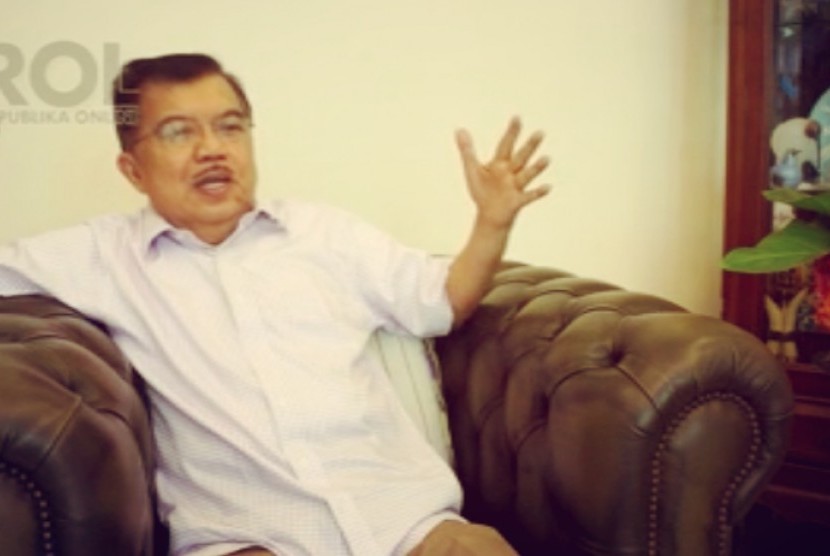REPUBLIKA.CO.ID, JAKARTA -- The National Search and Rescue Agency (Basarnas) has succeeded in carrying out its mission to lend assistance to the victims of accidents or natural disasters, stated Vice President Jusuf Kalla.
"The government will always support the steps. Basarnas should continue to learn from its past experiences in handling disasters and make the best use of its information and relations with other agencies," Jusuf Kalla remarked while opening the Basarnas' workshop here on Tuesday.
The event was attended by Coordinating Maritime Affairs Minister Indroyono Susilo, Chief of Naval Staff Admiral Ade Supandi, and Basarnas Head Bambang Soelistyo.
The vice president remarked that the humanitarian mission of AirAsia flight QZ8501 is testament to Basarnas' commitment, which cannot be questioned.
The vice president noted that the Basarnas' mission bears similarity to the National Disaster Mitigation Agency (BNPB).
Kalla urged the Basarnas to cooperate with other agencies such as the military, ministries, agencies, and the community in carrying out its duties.
With regard to the AirAsia case, the vice president assessed that the fishermen have contributed by assisting in the search efforts to retrieve the bodies of the victims and pieces of aircraft debris.
Moreover, Kalla pointed out that information technology has also contributed to the success achieved in the search for the victims of accidents and disasters.
"Without the cooperation and the operation, it would have been difficult to find the black box," he emphasized.
Soelistyo stated that the Basarnas has a major task of providing search and rescue services to the public due to Indonesia's geographical location.
Soelistyo admitted that the Basarnas needed the cooperation of other agencies to assist the victims of accidents and disasters.
"The accident of AirAsia flight QZ8501 has shown that the cooperation between agencies and the government is very important in finding the victims and plane debris," Bambang affirmed.
Earlier, the transportation ministry's National Transportation Safety Commission (KNKT) had released 18 points of factual information in a preliminary report based on the black box recordings of the ill-fated AirAsia QZ8501 flight.
Head of the KNKT's AirAsia QZ8501 Investigation Team Mardjono Siswosuwarno stated at a press conference here on Thursday that the release of factual information was aimed at shedding light on the estimates and clarifying assumptions surrounding the crash.
Point one: Before taking off, QZ8501 was in a suitable condition for a safe flight and in balance on board.
Point two: Every crew member had the required licenses and medical certificates.
Point three: The second-in-command pilot, or co-pilot, was flying the plane. He was on the right side while the pilot, or captain, was on the left side as the monitoring pilot.
Point four: The plane was flying at an altitude of 32 thousand feet on the M635 route.
"On the screen, the plane was seen turning to the left side," he added.
Point five: The plane was identified by the Jakarta Air Traffic Controller (ATC) in the initial contact at 23:11 UTC/GMT. The time difference with Indonesia was around seven hours. The plane turned left on the M365 route.
Point six: The pilot sought permission to fly at a height of 38 thousand feet, but the ATC in Jakarta ordered him to stay at 32 thousand feet (stand by).
Point seven: At 23:16 UTC/GMT, the ATC cleared the pilot to climb to 34 thousand feet.
Point eight: When the accident occurred, satellite photos showed a formation of cumulus-nimbus, with its cloud peak reaching a height of 44 thousand feet.
Point nine: The latest position of the plane was captured by radar at a coordinate of 3 34 48.6 degrees southern Latitude and 109 41 50.47 degrees eastern Longitude.
"At this position, the plane was back at parallel position with the M635 route," he noted.
Point ten: On December 30, 2014, the Basarnas found a body and the plane's debris floating in the Karimata Strait.
Point eleven: On January 9, 2015, the plane's tail was discovered at coordinates 03 37 40 degrees southern Latitude and 109 42 75 degrees eastern Longitude.
Point Twelve: The Flight Data Recorder (FDR) was recovered at coordinates 03 37 22.2 degrees southern Latitude and 109 42 42.1 degrees eastern Longitude.
"The FDR was taken to Jakarta in the evening. The next morning, or less than 24 hours, 1.200 recording parameters with 174 flying hours were downloaded," he remarked.
Point thirteen: On January 13, 2015, the Cockpit Voice Recorder (CVR) was found at coordinates 3 37 18.1 degrees southern Latitude and 10 42 12.2 degrees eastern Longitude.
"The CVR recorded two hours and four minutes of the last flight and had the conversations of the flight's crew, those between the two pilots, and between the pilot and the ATC officers," he revealed.
Point fourteen: The black box was downloaded and studied at the KNKT laboratory, and it took 11 hours to do it.
Point fifteen: Based on the FDR and CVR data, before the crash took place, the plane was flying stable at a height of 32 thousand feet.
Point sixteen: The black box recording stopped at 23:20 UTC/GMT.
Point seventeen: Until January 27, 2015, 70 bodies were recovered by a joint search team headed by the Basarnas.
Point eighteen: Evacuation and search efforts are still going on.
Mardjono Siswosuwarno remarked that the aforementioned information is based on facts, and it might be clarified in the final report that will be released in the next ten months.
AirAsia QZ8501 was flying from Surabaya, East Java Province, to Singapore on December 28, 2014, when it crashed in the Java Sea near Karimata Strait.
The ill-fated aircraft had 162 people on board, comprising 155 Indonesians (including the pilot), a French co-pilot, three South Koreans, a Malaysian, a Singaporean, and a Briton.


